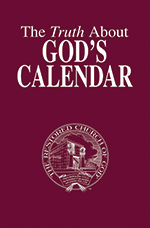The state animal of Maine, Alces alces, is a member of the family that includes deer and elk. Its common nameâmooseâis a derivative of a word used by the Algonquin Indians meaning âtwig-eater.â (Note that the same animals are known as âelkâ in Europe.)
Much larger than deer, a moose weighs about 1,000 pounds, with a large bull (male) moose weighing up to 1,800 pounds! They are the largest wild animals in North America, and can be up to seven feet tall.
Only bull moose grow the massive antlers for which the animals are famous, shedding them yearly in late winter. New antlers grow each spring, and are covered in fuzzy âvelvetâ that dries and flakes off once the antlers are fully formed. These signature antlers can reach spans of up to six feet across, and weigh up to 40 pounds!
Antlers are unique in the animal worldâthey contain the fastest growing tissue in any mammal and are composed of bone growing at a rate of up to two inches per week. During certain seasons, moose antlers can increase by one pound per day! Antlers should not be confused with the horns grown by cattle, rhinoceroses and other animals. Antlers are living organs, attached to the animal by a blood supply. They are shed annually and regrown the following year, whereas horns are permanent fixtures composed of non-living matter and made of the same protein, keratin, that forms human hair and nails.
Moose are found throughout the northern forests of North America, as well as Europe and Asia. They inhabit forested areas and swamps, where their diet of vegetation (leaves, twigs, bark and aquatic plants) is most plenteous. Moose are surprisingly good swimmers, able to paddle for long distances and dive underwater to forage. They enjoy the water, and are often found swimming in mountain lakes and ponds after the ice thaws in the spring.
Moose can live up to 20 years, but average about 10 to 12. Full-grown moose have few natural predators due to their size, with wolves and bears the only animals large enough to threaten them. Young moose, called calves, however, are easier prey for these carnivores. A moose mother usually has only one calf, which it carefully guards until the calf is ready to fend for itself, about a year after its birth.
Because of their size and lack of natural predators, moose tend to be unafraid of humans who stumble on them in the wild. If you are camping or hiking and happen upon one, do not let their apparent calm fool youâthey can be hostile if threatened. A bull moose during mating season or a female moose protecting her calf may be quite aggressive. They look large and docile, but can charge at a top speed of 35 miles per hour!
âBrake for Mooseâ road signs are placed for a good reason; a collision with a moose can be fatal for the car passengers as well as the mammoth animal. Moose tend to forage for their food at dusk, when they are harder to see on the road, sometimes causing accidents as they wander onto the roadway.
Historically, the American Indians hunted moose and used the hides for many purposes. They also carved the bones into tools. Today, moose are popular trophy animals, hunted for their sizeable heads and majestic antlers, as well as their meat. (If you happen to run across moose meat, they have cloven hooves and chew the cud, so God considers them clean for eating!) Moose meat is red and comparable to beef, but has a stronger, more âgameyâ flavor similar to deer.
Moose are truly fascinating members of the animal kingdom, and one of Godâs amazing creations!
















